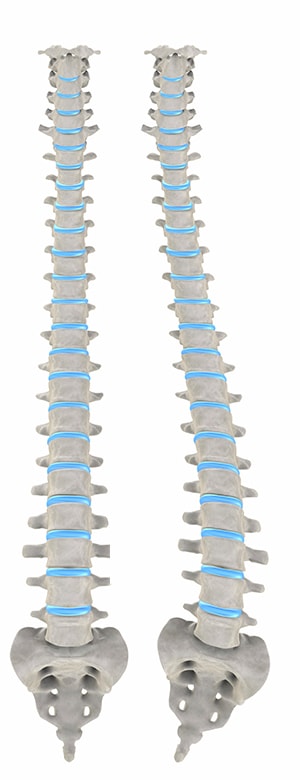What You Need To Know About Scoliosis...
When we think of scoliosis, many of us only consider one type of the deformity known as degenerative adult scoliosis. While this kind of scoliosis affects adults and is more severe, it is important to know more about the most common form of scoliosis, known as adolescent idiopathic scoliosis.

While most adolescence affected by scoliosis can live active and normal lives, the degree and severity of spinal curve can range from as small as 10 degrees to as significant as 100 degrees. Mild curves are more common than severe curves, and roughly 1 in 5 teenagers will require a back brace to prevent further curve progression and prevent the need for surgery.
ATC is pleased to provide treatment options for scoliosis patients to relieve pain associated with their condition, and to manage the progression of their case. However, it is important to consider that certain factors like age, severity of the condition, family history and the type of scoliosis will all play a part in deciding which form of treatment a patient should receive. The two main categories of scoliosis, which will have an impact on treatment are:
- Structural: this condition is irreversible, involving a curve in the spine with rotation, caused by either a disorder, infection, injury or tumor. Sometimes the cause is unknown.
- Functional (Nonstructural): this condition is reversible, involving a curve in the spine without rotation, caused by either a difference in leg length or by pain or muscle spasm.
Signs of idiopathic adolescent scoliosis include:
- Shoulder height asymmetry
- Rib "hump" or back prominence
- Tendency to lean to one side
- Difference in length of limbs
Here are some recommendations for managing the progression of scoliosis:
It is important to avoid being static and to incorporate as much exercise or movement into the day as possible to maximize comfort.
Improving core strength with certain exercises can provide symptomatic relief in patients.
Practicing good posture can provide symptomatic relief by lengthening the curve of the spine.
Sleeping on a relatively firm mattress can provide more support and allow for easier turning, preventing pain by eliminating excessive pressure on the spine. Laying on the back or side helps to prevent the arching of the back, which can occur when laying on the stomach. Keeping these things in mind will help you achieve a rest with maximum comfort.
While the spine cannot ever be perfectly straightened with any procedure, the services we offer, can provide patients with improvement.
These services include:
-
Laser Therapy
Photons or light energy stimulates tissue to provide pain relief and heal the tissue without forming scars. -
Exercise Therapy
A therapist will help a patient perform the correct exercises which are most effective for managing and correcting the spinal curvature. -
Dynamic Spinal Traction Therapy
A soft and relaxing traction stimulates the patient's lower back area. This treatment allows discs and ligaments in the spine to be slightly stretched, relieving pressure and reducing pain for the patient.
The ATC is committed to providing relief for scoliosis patients through the services we offer. Please book an appointment with us today to learn more about what type of treatment option might be best for you.
